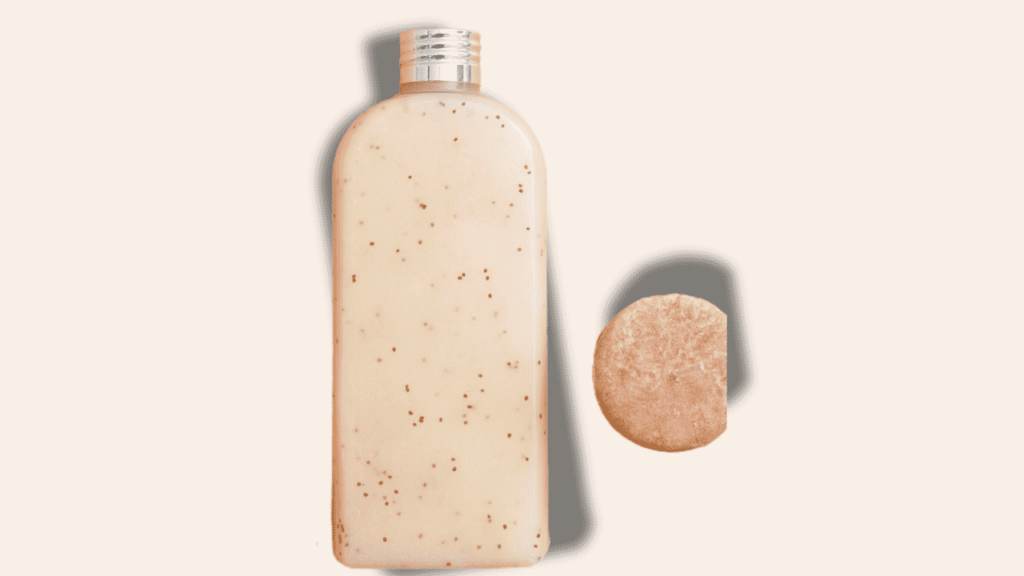Getting rid of sebum on the scalp can be challenging. Whether your scalp is dry or on the oilier side, maintaining a balance can be difficult. People prone to oiliness might find themselves dealing with greasy buildup and flaking. This issue requires understanding the process and training your hair through daily shampooing and investing in the right shampoos that do not strip your strands of moisture.
Sebum is a natural, waxy oil produced by glands in the follicles that keeps the skin moist. However, excessive sebum production leads to a clogged and oily scalp. The combination of sweat, dead cells, and debris can make the situation worse, causing infection. It’s essential to manage sebum production to maintain healthy and moisturized hair.
What Is Sebum Buildup on the Scalp
Hyperseborrhea occurs when follicles overproduce sebum, which combines with sweat, dead skin cells, and residue from haircare products like hairsprays and hair gels. This can lead to itching, flaking, and conditions such as scalp psoriasis and eczema. Symptoms include flaky, oily, or crusty skin, redness, and itchiness.
Causes of Excess Sebum on the Scalp
Hormonal Imbalances

Androgens, produced by the adrenal glands and ovaries, play a role in sex and secondary sexual characteristics, such as growth of pubic and underarm hair, and libido. Factors like PCOS, puberty, or hormonal medications can spike sebum production, explains Diana Pratasiewicz, director of education at Ouai. Stress reactions in the body also lead to oilier skin and higher scalp oil levels. This affects the well-being, maintenance of bone density, and intertwines with other health factors. The bottom line is that these elements influence scalp and hair conditions during stressful periods.
Poor Hygiene
Washing your hair infrequently can lead to buildup on the scalp, slowing the growth process. Skipping washes allows sebum to accumulate, causing a lackluster appearance and clogging follicles. Using harsh products or overwashing can strip natural oils, leading to a rebound effect. Philip B notes that elevated sebum levels aren’t a life or death situation, but they can hinder hair health.
Environmental Factors
Humidity and hot weather stimulate the sebaceous glands to produce excess sebum. Warmth makes pores expand, increasing oil production. Philip B highlights that environmental factors like climate and diet play a significant role. Foods such as dairy, sugar, refined carbs, and fried items have an association with increased sebum production, according to a Journal of Endocrinology study.
How to Treat Excess Sebum on the Scalp
Regular Shampooing and Brushing

To get rid of sebum on the scalp, regular shampooing and brushing are key. Wash your hair with gentle products that don’t irritate the skin. Use a shampoo formulation specific to your hair type. Avoid scrubbing; instead, massage in a circular motion with warm water. This helps increase blood flow and distribute natural oils. Opt for sulfate-free shampoos with natural ingredients like rosemary oil, lavender oil, and tea tree oil. Regular brushing ensures optimal hair care, improving moisture and shininess along the entire strand.
Scalp Exfoliation
Scalp exfoliation is crucial for removing dead skin cells and built-up dirt. You can exfoliate once or twice a week using a commercial scalp exfoliant or by making your own with dry oatmeal, brown sugar, and hair conditioner. Be mindful not to exfoliate more than twice weekly, as overdoing it can increase sebum production. Additionally, cleaning hair brushes with a mix of vinegar and baking soda helps eliminate dirt and oil, preventing sebum buildup and promoting a healthier scalp.
Using Natural Remedies for Sebum Control
Using natural remedies is an effective and gentle approach to managing excess sebum production. These treatments help reduce buildup on the scalp, regulate oil, and cleanse sebum plugs, promoting healthier hair strands. Additionally, the benefits of steaming hair include a balanced scalp environment, which further aids in managing sebum levels.
Tea Tree Oil
Tea tree oil is a natural essential oil with antibacterial and antiseptic qualities. Derived from tea tree leaves, it is powerful in purifying lipids in the sebaceous glands, helping with oily scalp and excessive sebum production. It’s a popular choice for people dealing with sebum buildup and scalp irritations like seborrheic dermatitis. The soothing properties of tea tree oil also alleviate dry, flaky skin conditions, making it a versatile remedy for various scalp issues.
Ayurvedic and Chinese Herbs
Ayurvedic herbs like shikakai, amla, and bhringraj are celebrated for their medicinal properties in solving scalp and hair-related problems. These herbs are popular in India and have gained international recognition. They help in maintaining a balanced, healthy scalp and reducing hair loss, leading to robust hair health.
Rosehip Oil
Rosehip oil, rich in essential fatty acids and antioxidants, is a game-changer for the scalp. When massaged in, it helps balance natural oil and reduces sebum buildup. This hydrating agent is excellent for maintaining healthy skin, promoting hair growth, and making hair strands soft, shiny, and full of life.
Preventing Sebum Buildup on the Scalp
After you have treated scalp buildup, follow these steps to prevent it from happening again: Avoid excessive use of haircare products like hairspray and ultra-stiff hair gels. Avoid harsh chemicals such as dyes, perms, or bleach. Establish a healthy cleansing routine with exfoliation and apple cider vinegar rinses. Wash your hair after heavy sweating and check for signs of redness, dryness, or greasy patches.
Using the Right Shampoo and Hair Care Routine
To manage sebum on your scalp, adjust your haircare routine. Crownhairs), recommends using products tailored for your hair type. Philip B advises brushing with a natural boar bristle brush, which is important for sweeping and absorbing oils from roots to ends. Gently massage your shampoo into the scalp in circular motions to emulsify waxy buildup. Choose shampoos with salicylic acid, apple cider vinegar, and rosemary oil to cleanse and balance your scalp. Regular oiling wavy hair and shampooing every one to three days helps maintain healthy hair and nourishes from the mid-shaft to ends.
When to See a Healthcare Provider
Seek medical attention if scalp buildup causes a secondary bacterial infection. Signs include painful, red, swollen skin, pus-filled blisters, crusted sores, and fever with chills. Bacteria can enter through cracked or broken skin, affecting deeper tissues. Consult a healthcare provider if you notice these symptoms.
Conclusion
To effectively manage sebum buildup on the scalp, adopt regular haircare routines, use gentle products, and incorporate natural remedies. Identify and mitigate environmental factors and hormonal imbalances. Seek medical attention if you experience severe symptoms like painful, red skin or infection. Maintain a healthy scalp for optimal hair health.
FAQ’s
Why is my scalp producing so much sebum?
When shampooing less frequently, typically every two to three days, it can lead to scalp buildup, especially when combined with styling products like hairspray. This buildup creates an environment where bacteria and fungi thrive, increasing the risk of scalp inflammation that promotes excessive sebum production.
How can I remove sebum from my scalp at home?
Start by washing your scalp with warm water as the first step in removing sebum clogs from your head. Use a gentle shampoo and massage your scalp with your fingertips. This aids in the removal of hardened and dried sebum.
What product is good for excess sebum on scalp?
Witch hazel can relieve itching, close oil-producing pores, and reduce inflammation caused by dandruff, pH imbalance, or other scalp disorders. It’s gentle enough for sensitive scalps.
How do I get rid of white gunk on my scalp?
Brushing regularly can prevent tangled hair and help break apart buildup. Use an exfoliator on the scalp and select a shampoo and conditioner that work for your hair type.

